When you buy through links in our articles, Future and its syndication partners may earn commission.
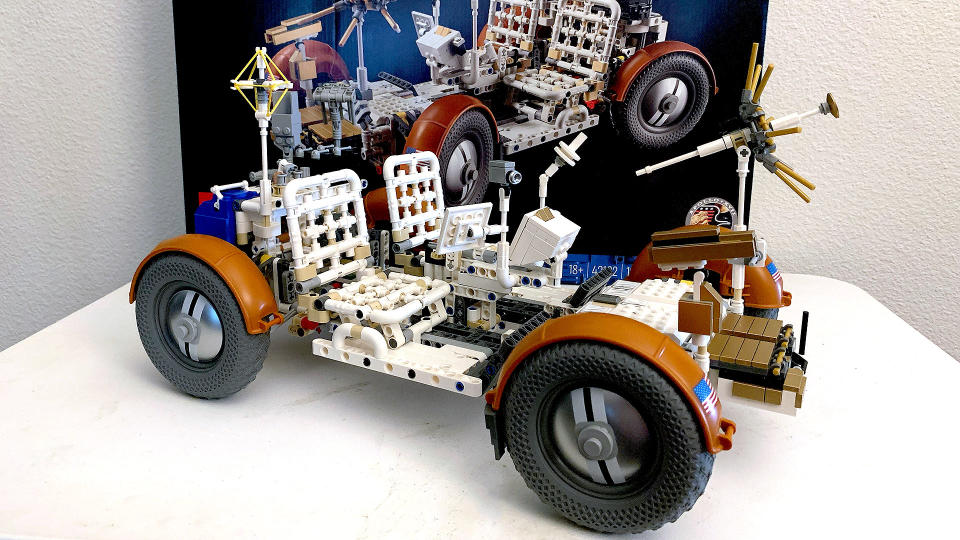
There’s a moment when building Lego’s latest NASA-inspired set when the assembly transforms from a random collection of plastic bricks into a clearly visible model of a moon buggy. It’s satisfying, and comes with the sense that this was a quick and easy build.
And then you realize you’re not even a quarter of the way there.
Announced in May, the Lego Technic NASA Apollo Lunar Roving Vehicle – LRV goes on sale today (August 1). The 1,913-piece set is aimed at adults and retails for $219.99 (€219.99 or £189.99).
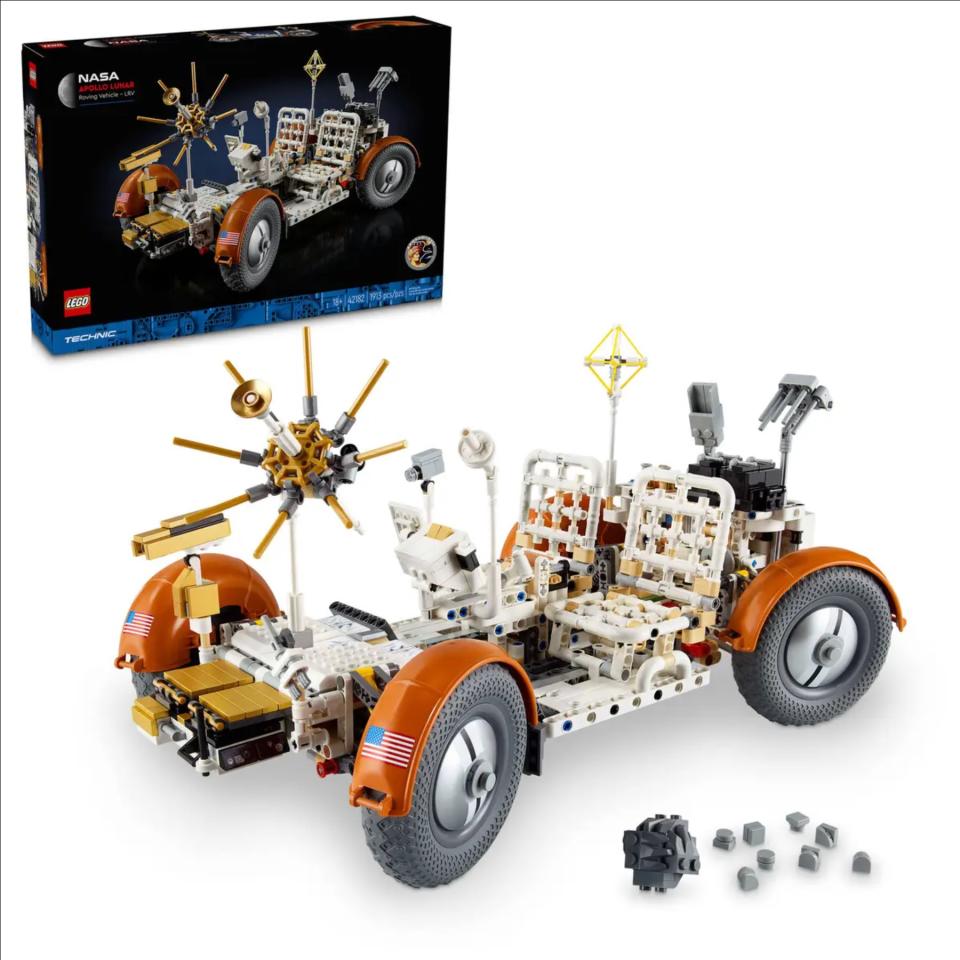

Lego NASA Apollo Lunar Rover – LRV: $219.99 at Lego
This faithful recreation of NASA’s Apollo Lunar Roving Vehicle includes details and features from the real LRV that astronauts used during their historic moon missions. The 1,913-piece set is a must-have for any space history enthusiast. View Deal
After building the basic chassis, including the spring suspension system and the drivetrain that steers the four-wheeled vehicle using the same T-arm used by astronauts, the kit moves on from focusing on the rover to the panels, equipment cabinets and instrumentation that make the first electric car on the moon such a technological marvel.
The research, led by lead designer Olav Krøigaard, surpassed methods used to create previous Lego-produced replicas of historic NASA spacecraft, including the Apollo Saturn V rocket and lunar module, space shuttle Discovery, the International Space Station and the Artemis Space Launch System (SLS).
“Olav, the rover designer, knew so many details about what was happening in real life. So much so that if you look at the shapes of the rocks in the sample kit, they look as similar to real rocks found in the Apollo archives at NASA as you can see using Lego elements,” said Dan Meehan, Lego’s senior design manager, in an interview with collectSPACE.com.
“We met with an Apollo archivist to do some fact-checking while we were developing the model, and he and Olav just sat down like lifelong friends and just shared information about the rover,” he said. “So the lunar rover has the most accurate detail I’ve ever seen in a Lego set. It was a labor of love.”
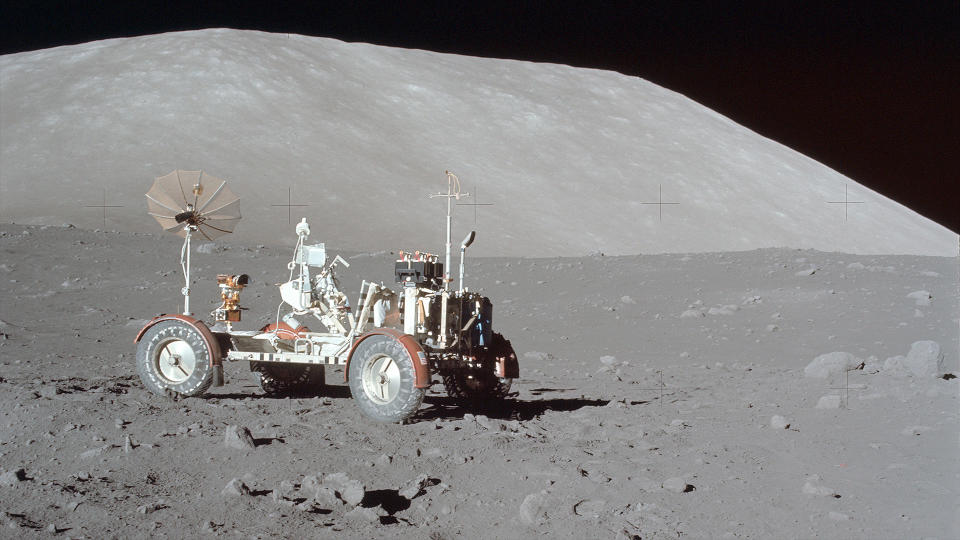

Task specific
Between July 1971 and December 1972, NASA launched three rovers to the Moon, which greatly increased the amount of land that astronauts could explore compared to previous missions. The general design of each LRV was the same, but what they carried and how they were configured changed in response to the needs of the mission, especially in Apollo 17.
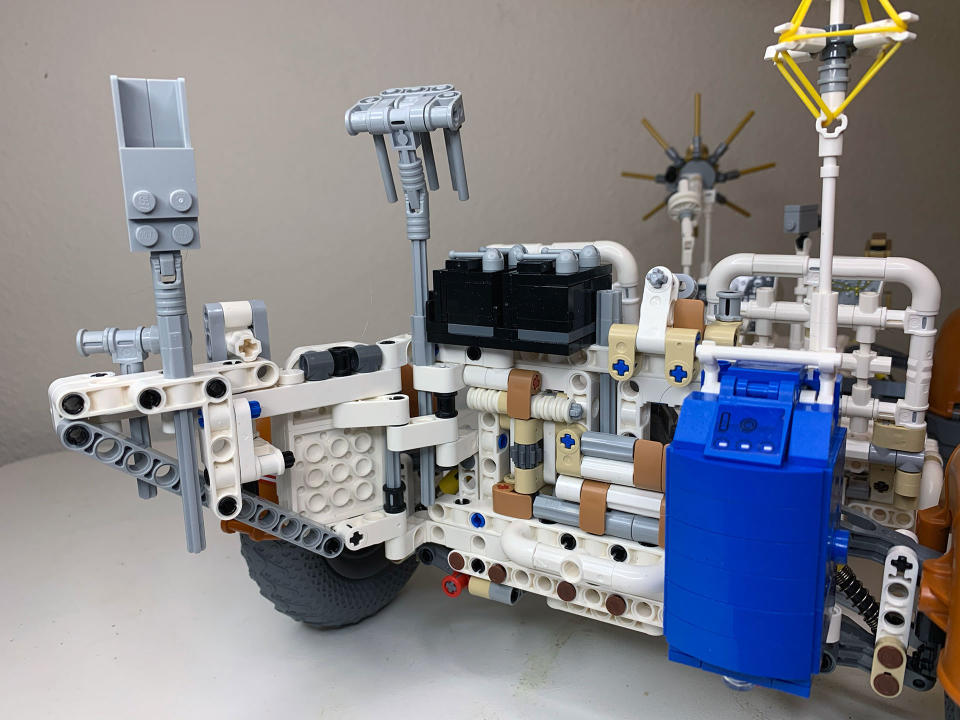

Krøigaard’s attention to detail resulted in a replica of the LRV-3 flown by Gene Cernan and Harrison “Jack” Schmitt on Apollo 17. Apollo 17 was the last Apollo mission to land on the moon.
“The astronauts completed several expeditions in LRV-3 to collect rock and soil samples and capture breathtaking images of our nearest celestial neighbor,” Krøigaard says, as quoted in the set’s 350-page instruction book. “Explore the myriad of equipment, tools and intricate details as you build.”
Lego didn’t label the various components in the instructions, but Apollo 17-specific props replicated in the set include:
-
The explosive packages for the Lunar Seismic Profiling Experiment (LSPE) are four black boxes (with their own carriers) mounted on the upper left side of the rover’s rear pallet;
-
moon rake, adjustable scoop and hammer;
-
sample bag filled with small “moon rocks” as an example of multiple pouches mounted on the actual LRV-3;
-
Surface Electrical Properties antenna with yellow elastic band; and
-
The Traverse Gravimeter Experiment is a blue box made in the color of the original, with a vibrating rope accelerometer and a digital display.
The set includes a bonus item that was not part of the LRV-3 or Apollo 17 missions. The largest moon rock returned to Earth, “Big Muley” (26 pounds or 11.7 kg) — named after field geology team leader Bill Muehlberger — was recovered by Apollo 16 astronauts John Young and Charlie Duke using LRV-2.
(Lego’s reference to Apollo 15 is subtle and probably coincidental. The set’s release coincides with the mission’s 53rd anniversary. On August 1, 1971, David Scott and James Irwin launched LRV-1 on its second of three voyages.)
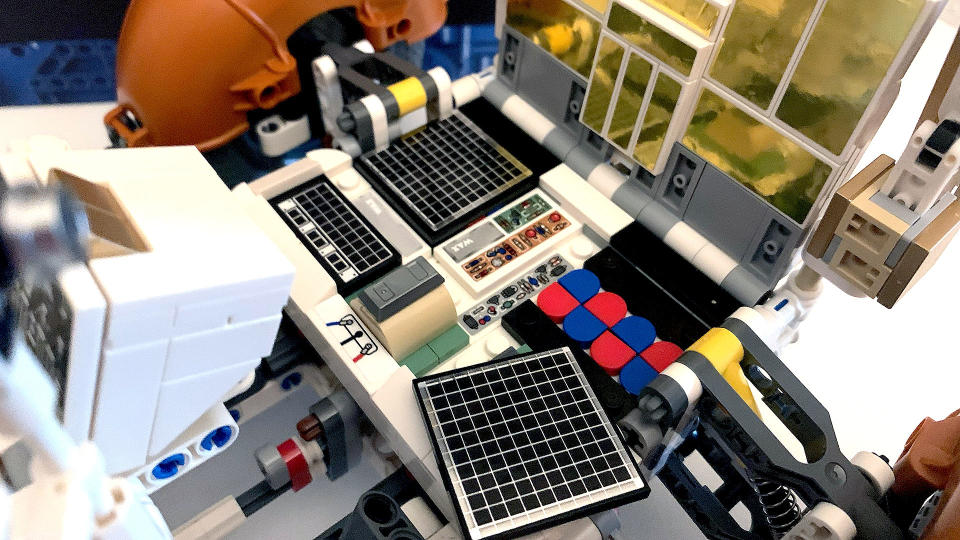

Hidden stickers, missing network
Due to the extreme temperatures and radiation environment on the Moon, many of the LRV’s components, aside from the instruments, had to be covered in multi-layer insulation and woven silica fabric (Kapton and Beta fabric, for those familiar with the brand names). Krøigaard found a way to “reveal” this by adding hinged panels that can be lifted to reveal what’s underneath, insights that could only be seen during construction.
In some cases, stickers depicting electronics and wiring are attached to bricks and then permanently covered by other parts so that they are only visible for a short time while that component is being built.
These details can be found under the batteries located on the lunar rover’s front platform and inside the Lunar Communications Relay Unit (LCRU) secured to the front chassis.
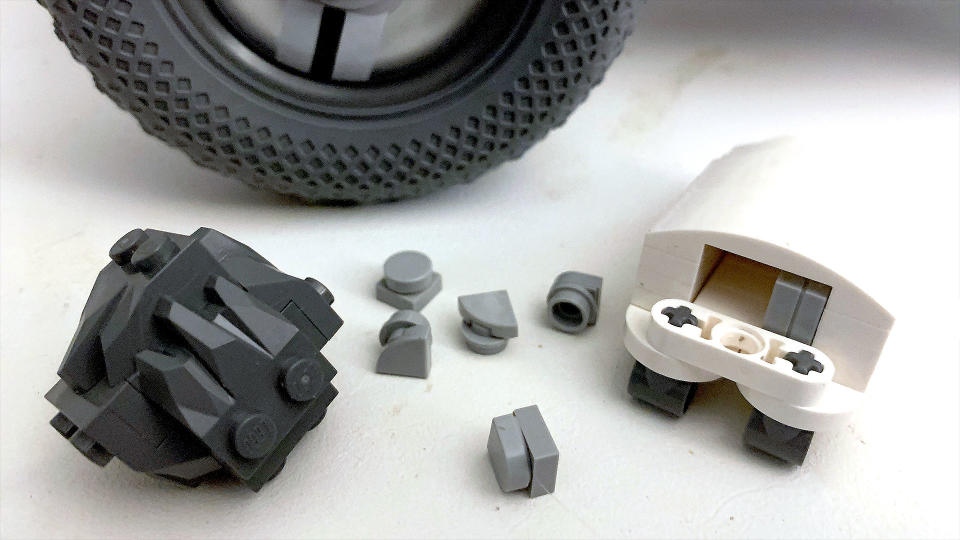

Not every aspect of the real rover can be replicated in Lego bricks. Two good examples also involve the use of networks.
The set omits the fine mesh that spans the space between the beams on the high-gain antenna’s dish. It also replaces the LRV’s mesh tires with rubber, mimicking the same solution achieved for Earth-based rovers used for training. (The mesh tires could only support the weight of the rover and astronauts in the one-sixth gravity environment on the moon.)
Compact car
The Lego Technic NASA Apollo Lunar Rover – LRV set has a secret feature, just like the real moon buggy.
At 10.2 feet (3.1 meters) tall, the fully deployed rover was too large to fit inside the lunar module so it could be landed on the moon. The vehicle had to fit into a wedge-shaped storage compartment, which required the ability to fold into a more compact package.
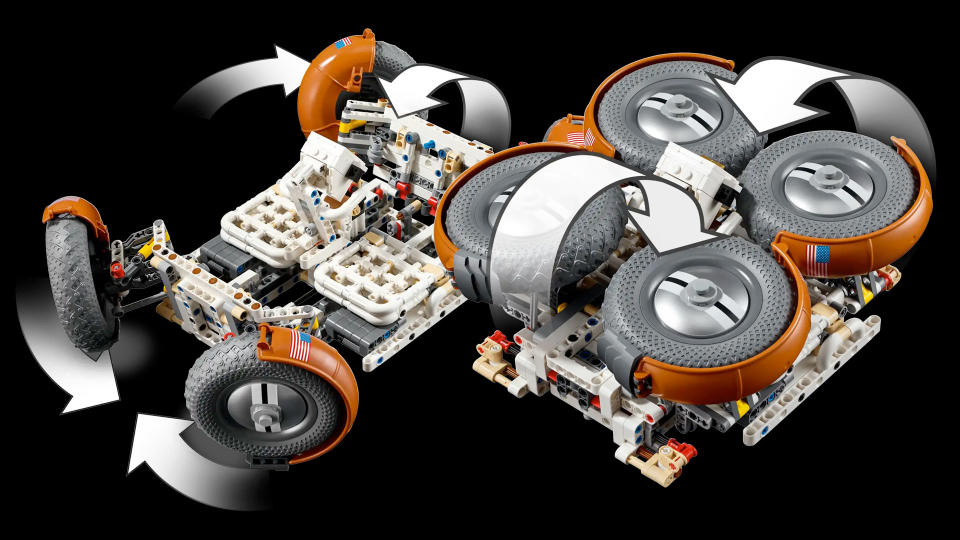

The Lego model can be taken apart and folded down in the same way. After removing both the front platform (and LCRU) and the rear tool pallet, the chairs lie flat, the control screen lowers, and then the wheels can be turned and the chassis collapsed on top.
The final builds for the Lego LRV are tabletop display stands for displaying the rover in its folded, three-part launch configuration or as a fully unfolded vehicle.
To follow collectSPACE.com Open Facebook and @ on TwitterCollecting area. Copyright 2024 collectSPACE.com. All rights reserved.